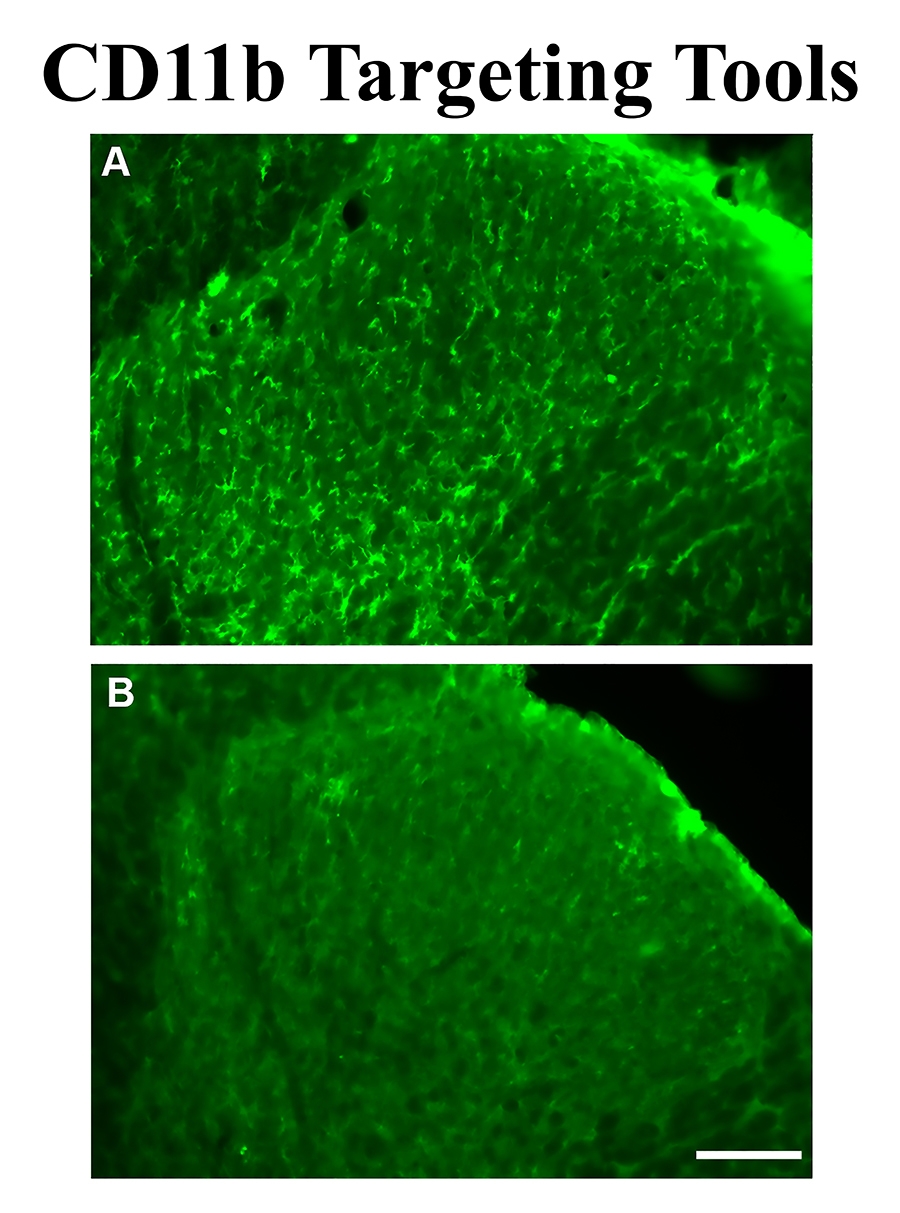In a study produced by Ferrini et al. indicates that morphine-induced hyperalgesia, as neuropathic pain, is a pathological alteration of pain sensitivity whose expression is gated by spinal microglia. Targeting at any level, this microglia-to-neuron cascade is a valuable strategy to improve the use of morphine in chronic pain.
Figure at right: Microglia depletion in the lumbar region of the spinal cord after intrathecal injections of Mac-1-SAP (Cat. #IT-06). Microglia are identified by IHC with a mouse CD11b antibody, clone OX-42 (1:500).
A) A representative cervical spinal dorsal horn section obtained from a rat which was subcutaneously injected with morphine for 10 days (10 mg/kg) and intrathecally injected with Mac-1-SAP (20 mcg) during the last 3 days.
B) A representative lumbar spinal dorsal horn section from the same rat showing the decrease in OX-42 staining after Mac-1-SAP treatment. Scale bar 50 μm.

Morphine hyperalgesia gated through microglia-mediated disruption of neuronal Cl- homeostasis. Ferrini F, Trang T, Mattioli TA, Laffray S, Del’Guidice T, Lorenzo LE, Castonguay A, Doyon N, Zhang W, Godin AG, Mohr D, Beggs S, Vandal K, Beaulieu JM, Cahill CM, Salter MW, De Koninck Y. (2013) Nat Neurosci 16:183-92.
Research Validation with Controls
ATS provides controls to validate your research with targeted toxins. For example: Order a Mac-1-SAP kit in the 25-mcg size (KIT-06-25) and you will receive Mac-1-SAP (Cat. #IT-06) plus Rat IgG-SAP (Cat. #IT-17) and Mac-1 (CD11b) Rat Monoclonal (Cat. #AB-N05).
